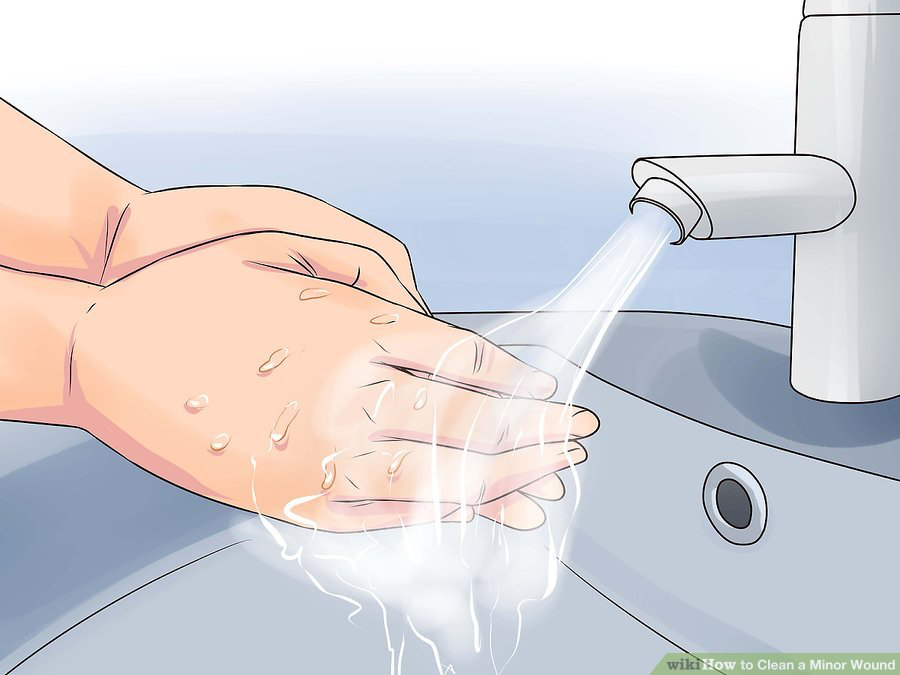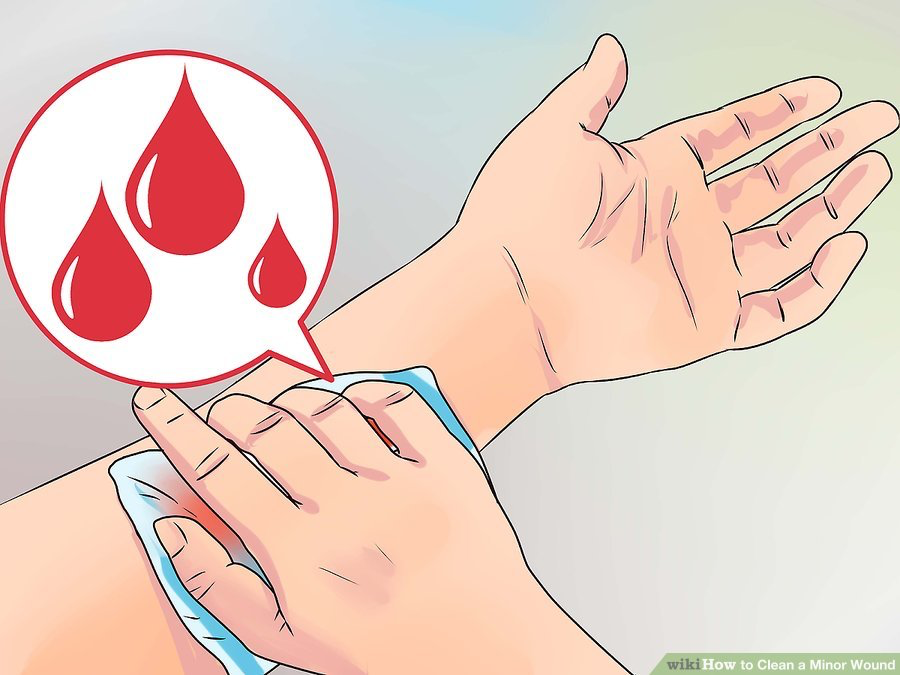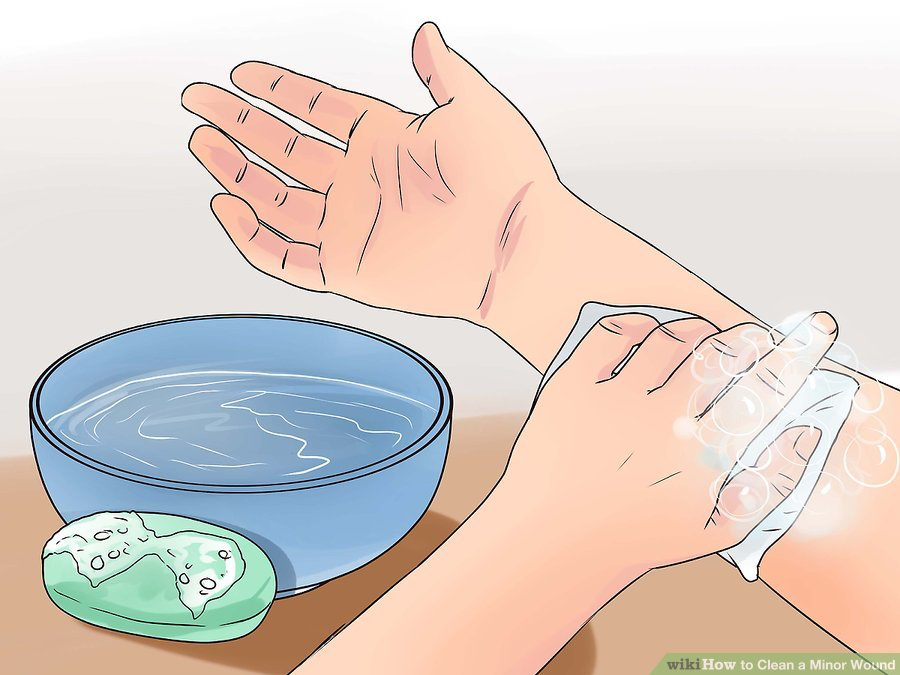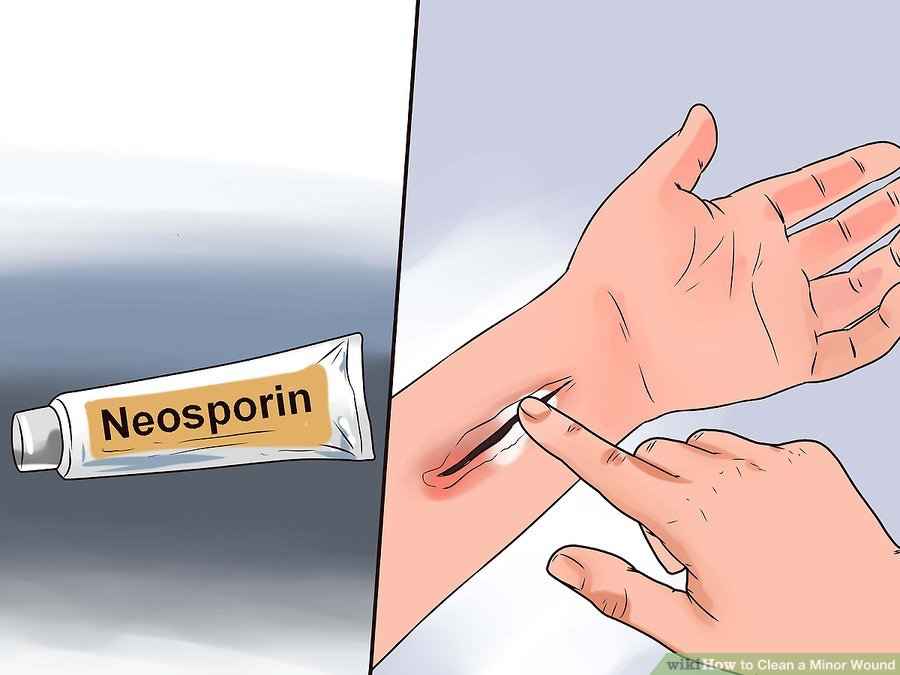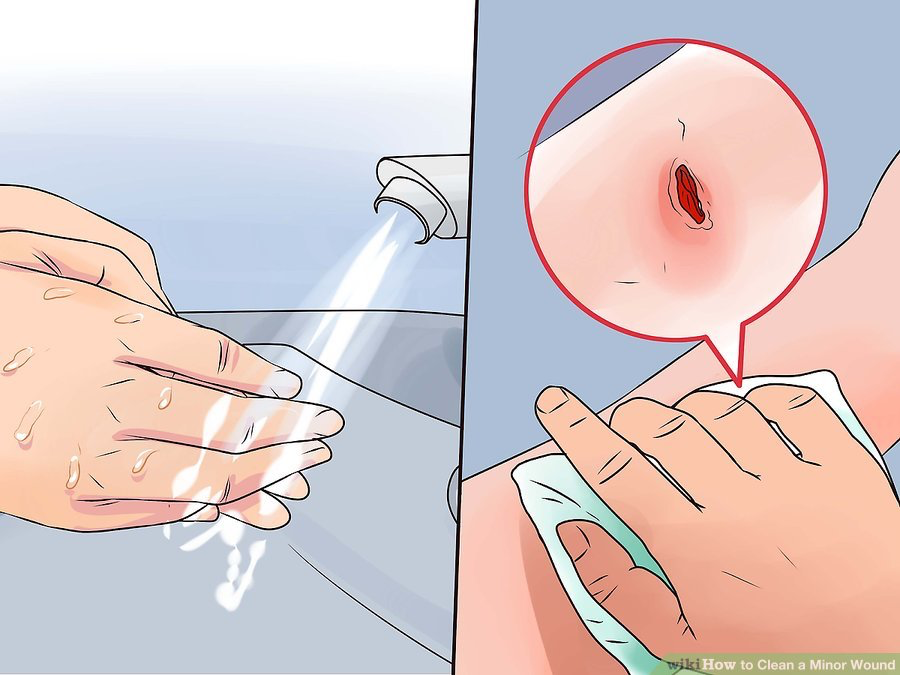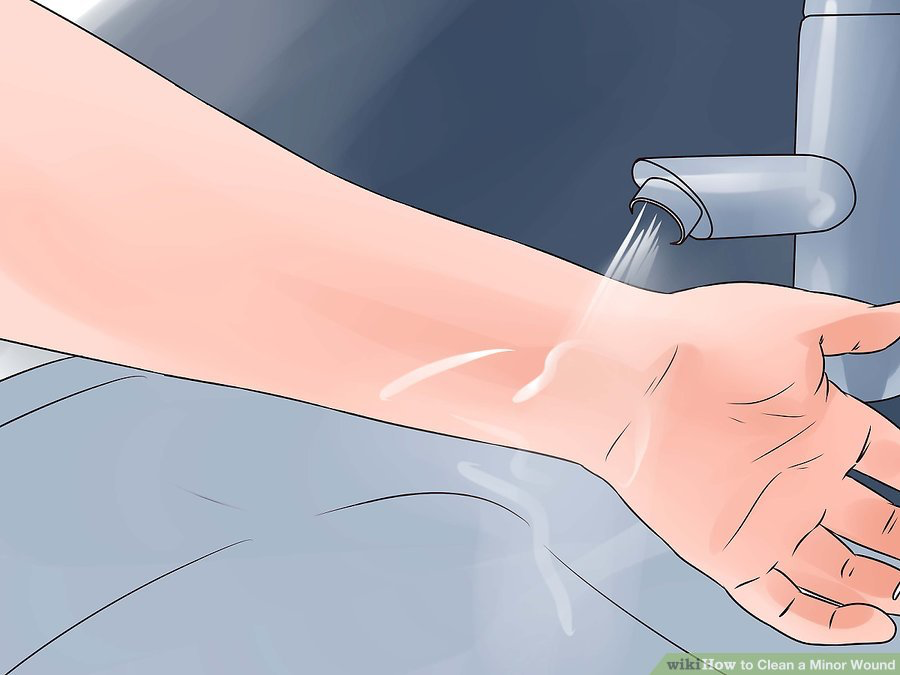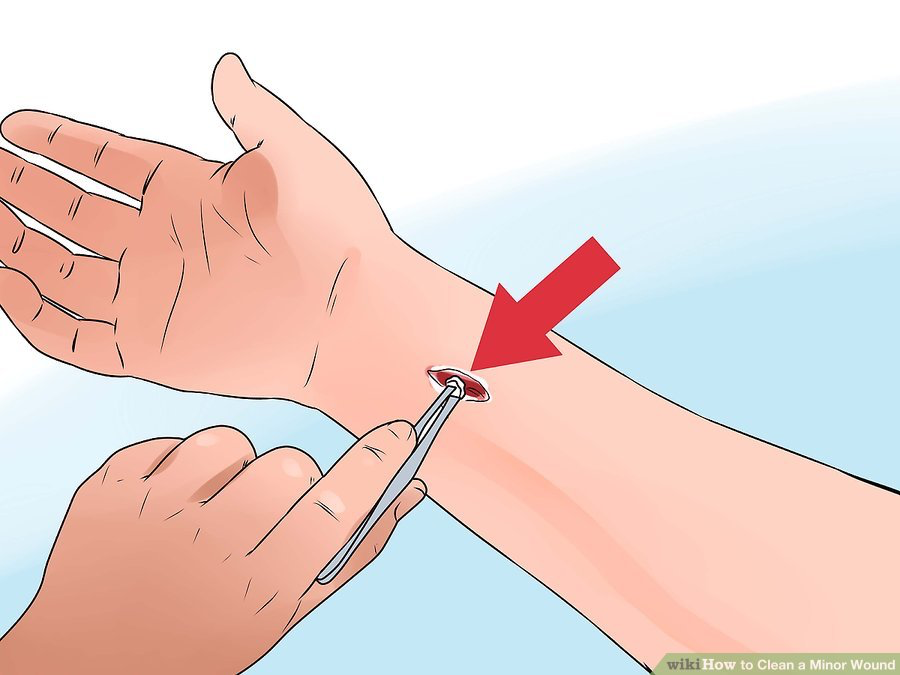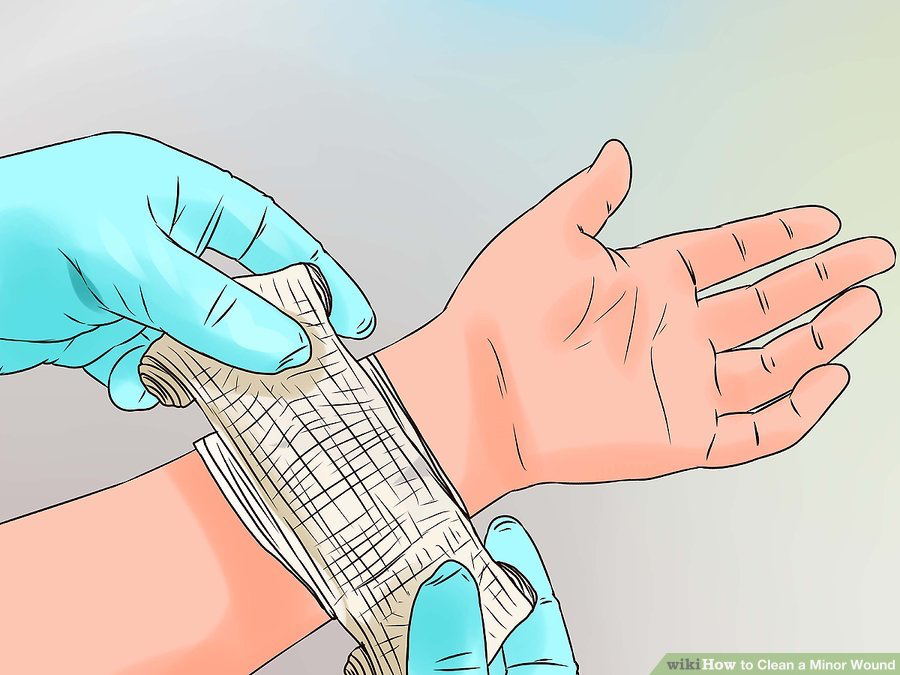Back First Aid Explained
How to Clean a Minor Wound
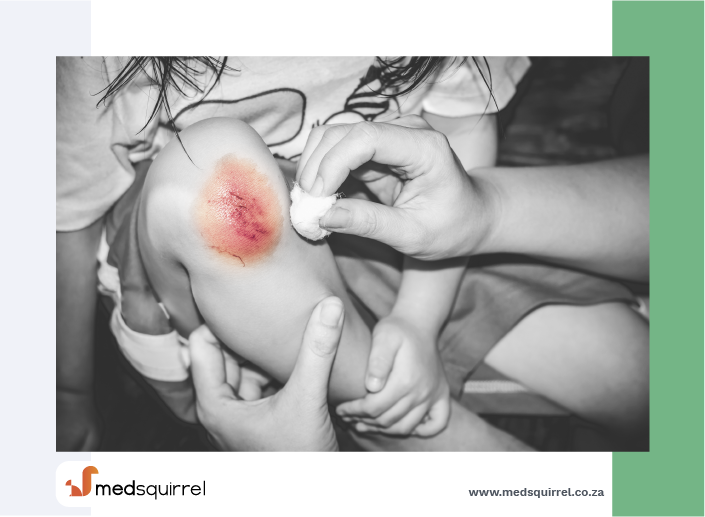
We have selected the following expert medical opinion based on its clarity, reliability and accuracy. Credits: Sourced from the website wikiHow. Please refer to your own medical practitioner for a final perspective, assessment or evaluation.
Overview
Small cuts, scratches, scrapes, and puncture wounds can be very painful, even if they aren’t very serious. The first step for any first aid is to clean off the cut so that you can figure out how serious it is, and what you do next. Cleaning a wound properly can help minimize infection, pain, inflammation, and other complications.
1: Cleaning a Cut or Scrape
1. Wash your hands
If you are going to be putting your hands near an open cut, whether on you or someone else, your hands should be clean. Wash with soap and water, and dry off before handling any bandages or ointments.
- If you don’t have water, antibacterial cleanser will do the trick in a pinch. Water is better, but the important thing is to keep your hands clean to avoid infecting the wound.
- If disposable protective gloves are available, go ahead and use them. They aren’t necessary, but anything to help prevent infection is a good idea.
2. Apply pressure to stop the bleeding
Make sure the cut isn’t bleeding anymore before you start to put on any ointments or bandages. Hold a sterile bandage or clean cloth on the cut until it clots and the bleeding stops.
- If the cut is really small, a tissue might be enough to soak up the blood. If you can get a clean cloth, though, that is better.
- Don’t pull off the cloth or gauze to check on the wound until the bleeding has definitely stopped. That can cause the bleeding to restart.
- If blood starts to seep through, and the cloth or gauze has gotten soaked, don’t remove it from the cut. Simply add more on top, and keep up the pressure.
3. Wash the cut
Use water to rinse out the cut, and use soap to help clean the area around the cut. Try to keep soap out of the cut.
- Washing the cut is also important because it will let you see how big it is. If it is especially large or deep, contact a doctor before trying to apply a bandage on your own.
4. Use an antibiotic cream
Spread a thin layer of antibiotic cream over the cut to help prevent further infection. Something simple like Neosporin or Polysporin should be more than enough.
- Some people are allergic to certain ointments, which cause a mild rash to appear on the skin. If the person starts to get a rash, stop using the ointment.
5. Put a bandage over the cut
You can either apply a band-aid, or hold a piece of gauze there and wrap with medical tape or a larger bandage. This will help keep the wound clean and keep bacteria out.
- Make sure your bandage covers the entire wound. If there are parts that the bandage can’t cover, use another one.
- If the wound is a scrape or scratch, and hasn’t broken the skin or drawn blood, you don’t need to apply a bandage.
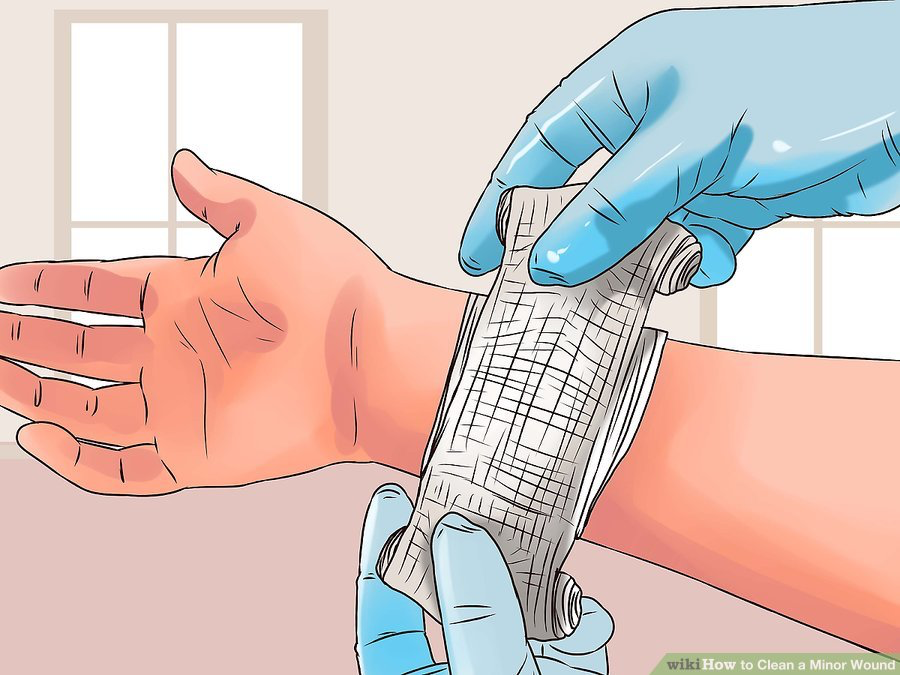
2: Cleaning a Puncture Wound
1. Wash your hands and stop the bleeding
Wash up with soap and water to help prevent infections. Then hold a clean cloth or bandage over the wound until the bleeding stops.
- Don’t pull off the cloth or gauze to check on the wound until the bleeding has definitely stopped. That can cause the bleeding to restart.
- If blood starts to seep through, and the cloth or gauze has gotten soaked, don’t remove it from the cut. Simply add more on top, and keep up the pressure.
2. Rinse the wound under running water
A puncture wound is going to be deeper than a cut. You’ll need to hold it under the water about 5 minutes to really rinse it out. Once you are finished, wash the area around the wound with soap.
3. Look for anything in the wound
This could be dirt, splinters, the object that caused the wound, really anything that shouldn’t be there. You don’t want any foreign object in the wound, as it could lead to an infection, or prevent proper healing. However, if the puncture is deep and has the object that caused it still inside, leave that object in and go to the hospital. Removing it will cause more bleeding.
- If you do find something, don’t use your fingers to remove it. Instead, a pair of tweezers cleaned in rubbing alcohol should be enough to get out bits that won’t wash away.
- Be careful not to poke in the wound. Reaching your finger, or the tweezers, or anything else into the puncture wound will only make it worse.
4. Put a bandage over the cut
Put a thin layer of antibiotic cream over the cut before you put on the bandage. Make sure the bandage goes directly over the wound.
- If the cut continues to bleed, replace the bandage as needed to keep it fresh. You should also contact your doctor for additional treatment.
_______________________________________________________________________________________________________________________
Are you a healthcare practitioner who enjoys patient education, interaction and communication?
If so, we invite you to criticise, contribute to or help improve our content. We find that many practicing doctors who regularly communicate with patients develop novel and often highly effective ways to convey complex medical information in a simplified, accurate and compassionate manner.
MedSquirrel is a shared knowledge, collective intelligence digital platform developed to share medical expertise between doctors and patients. We support collaboration, as opposed to competition, between all members of the healthcare profession and are striving towards the provision of peer reviewed, accurate and simplified medical information to patients. Please share your unique communication style, experience and insights with a wider audience of patients, as well as your colleagues, by contributing to our digital platform.
Your contribution will be credited to you and your name, practice and field of interest will be made visible to the world. (Contact us via the orange feed-back button on the right).
Disclaimer:
MedSquirrel is a shared knowledge, collective intelligence digital platform developed to share medical knowledge between doctors and patients. If you are a healthcare practitioner, we invite you to criticise, contribute or help improve our content. We support collaboration among all members of the healthcare profession since we strive for the provision of world-class, peer-reviewed, accurate and transparent medical information.
MedSquirrel should not be used for diagnosis, treatment or prescription. Always refer any questions about diagnosis, treatment or prescription to your Doctor.

